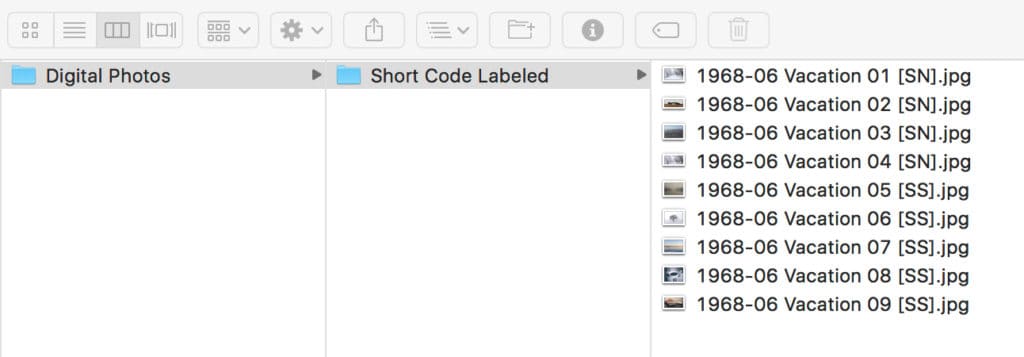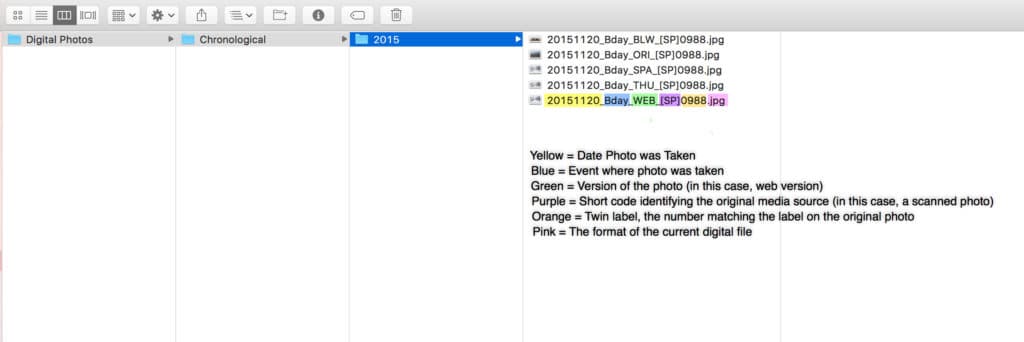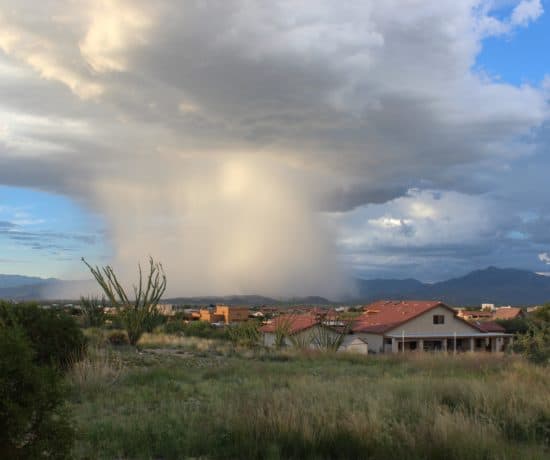Any time we’re talking about labeling digital photos, we’re faced with a number of options on how to sort them, and how to reference them. In previous posts, I’ve gone over how to deal with multiple edits and versions of photos as well as how to use twin check labeling, but there’s one more method I haven’t covered yet! I’m talking, of course, about short codes! In this post, I’ll be sharing how I create my own short codes to identify the sources of my digital photos, that is…if they originate from something other than a smartphone or digital camera. Even though short code labeling isn’t an “official” way of organizing photos, I have found it very helpful at times. Enjoy!
Love Cross-Referencing Much?
As a perfectionist, it always excites me when I can use my detail-orientedness for something useful, which is why I love genealogy so much. I love being able to see clues everywhere, and actually know and understand what they mean. Figuring things out is fun, so I often try to come up with creative ways to improve my organizing systems. I mean, who doesn’t want to be more efficient? I certainly do, which is also why I enjoy cross-referencing things. Sure, it goes overboard sometimes (this might be one of those instances), but you can’t deny the fact that it can be useful too.
In any type of organizing (and I go into this more in my free organizing mini-course), it’s dangerous to get too complicated with your organizing system because it usually ends up being too difficult to maintain. However, in some cases (like this one) where you are archiving memories, there isn’t much too maintain once the system is up and running, and in those cases, a little more complexity isn’t that big of a deal. If you’re aiming to get your collection labeled as fast as possible, this isn’t for you, but if you have some time on your hands and enjoy the process, you can go into more detail and do an amazing job for your future descendants!
Let’s dive into the topic at hand!
What is a [Short Code]?
So what the heck is a short code anyway? Well, short codes are used in a number of different industries, but most often in Telecom. If you’ve ever ordered something (or maybe voted) with your cell phone, chances are you’ve already used a short code. Ever seen those “reply YES to receive text messages from us” notices on your phone? That YES is a short code. It’s a command that automatically tells the receiving end what you want and triggers the relationship. They love it because they can then charge you standard text messaging rates without interruption, and you love it because you can stay up-to-date on the latest sales. Plus, it’s easy-peasy for you to type.
Short Codes = Shortcuts
Short codes are also used extensively in IT where they basically act the same way – as a shortcut. They let you bypass a bunch of code and instead reference the work you need with a short and easy-to-remember command. These little shortcuts helps people (like me) be more efficient.
Since I’m an avid blogger, I love using short codes on WordPress because it’s cuts down on the work. I type short codes into my blog post and that code is then replaced with dynamic content. For example, me typing the command [[Gallery]] into this blog post would embed a gallery that I specify. If I typed in [[Instagram]], it would embed the latest image from my instagram account. Cool, huh? These short codes make it so simple to add something to a blog post (identifying the source) without having to do extensive work. #YES!
Did you notice that I had to actually had to use double brackets around the short code to explain this to you? Because guess what? If I had typed the code with just one bracket on each side, the code would actually work and embed that gallery (or that instagram picture), which I don’t need to happen right now. So yeah, real short codes use single brackets, but for demonstrative purposes, I’m making them double.
What Does Any of This Have to Do with Organizing Digital Photos?
Ha! Good question. Maybe I’m a tad bit too ambitious at times, but I love to think outside the box and adapt systems that work elsewhere into my organized digital life. If using short codes is a good way to increase efficiency AND identify the source of something, why wouldn’t I use it in photo organizing? It would be foolish not to! Really great systems are flexible, and this is one such system! You can use this method together with all the other methods of sorting and organizing to make your life a whole lot easier, and a whole lot more organized!
Let me paint you a picture. Imagine that you have a negative that you have scanned. You want to save the original in an archival binder, and then enjoy the digital image on your computer. Labeling that image using a short code will let you identify where that digital image came from (i.e. the negative) just by looking at the filename. No explanations. No long sentences. Just a simple code. Having that information can be very valuable at times!
Before I move on to explain the system to you, let me be clear about its purpose:
Why Would Referencing the Original Source be Important?
There could be many reasons why you would want to identify the source of a digitized image. A main reason would be if you are keeping the original so that you can go back and find it quickly again. Why would you want to find it again if it’s already been digitized? Well, if you ask me, I like to have a cross-referenced library not only for organizational purposes, but also so that I can rescan the original if the technology ever improves. I find that it’s always great to have the master intact.
Let’s say scanning technology improves drastically within the next 3 years (and it will). Maybe you’d like to go back and rescan some of the photos at a higher dpi? Maybe those film reels you got converted into HD aren’t looking that great on your 4K TV anymore and you’d like to up the resolution a bit? Well, if you have the originals still, you can easily do this.
Your Master is King
You have to remember that your original media (your master) will always be the best quality. Everything else is purely derivative. A printed photo is really just a copy, which illustrates the fact that your original image will most likely get modified in some way during the digitization process. There are many ways to manipulate digital images when scanning, so maybe you’d like to experiment a bit? Maybe the person who helped you scan didn’t have the optimum setting on, and cropped it too much?
I know from digitizing countless reels of film and thousands of negatives that sometimes, there’s more in the photo than you think. That auto-crop might be cutting out some important details. Who knows? If you’re trying to find out if your ancestor was married, and his (or her) hand is cropped out-of-frame in the copy, you might want to go back to the original to check for a ring. The clue could be there. Anyone interested in genealogy knows to always go to the original source whenever possible.
Working with Copies = Safe Original
If you have an original of something (perhaps an old scrapbook?), it’s a really great idea to have that heirloom scanned, so that you minimize the wear and tear of the original. This is common practice with pretty much any archival material, and it even happens when editing digitally (“non-destructive” editing). Working like this allows you to play around all you want, but still go back and hit reset at any point.
Copies are beneficial because you can use them without fear of damaging the original. You can also share them many times over. However, nothing changes that fact that your master is king. There is only one original, and you want to take care of it. If you keep your originals, you’ll want to indicate somewhere on the copy where the original is kept, so that you can easily reference back at any time. Otherwise, what’s the point in keeping it?

I’m A Perfect Pinnable!
Twin Check Labels + Short Codes = Organizing ♥♥♥
Just like twin labeling, short code labeling can be extremely helpful for managing your digital archive because it references the original source. If you wanted to, you could use it in conjunction with twin labeling (like I do) to create an impeccable digital archive. While a twin check label will reference the exact piece of memorabilia by number, the short code will give you a quick glimpse into the category of the original.
Where’s the Right Box?
If you have a very large archive, you know that it doesn’t all fit in the same box, especially not if your family is as snap-happy as mine has been throughout history. Your original media is likely stored in separate boxes because of the different sizes, shapes, and preservation needs for each format. Slides will be in one box, your home movies might be in another box, and your negatives may be in a binder. Right? You’re not likely (at least if you’re an organized person) to store them all together.
If you only label your digitized photos with twin labels and nothing else, it’s going to be very time-consuming for you to find the right box when you need it. It’s not that easy to know where an original came from just by looking at it (unless you’re a total pro, in which case I need to hire you STAT). That digital photo could have come from either a slide or a negative, and if you need to rescan something, how will you know where to find it? This is where this system is extremely helpful. You can definitely use twin labels, but I recommend using short code labeling alongside it. I often use both systems together to create a complete picture of 1) what the original was, and 2) where exactly I can find it.
Can’t You Just Label the Box?
Absolutely! If you think it would work better for you to just label the box that carries your original, by all means do that. In any type of organizing, you create a system that works for you! It’s actually never a bad idea to label anything, so I highly encourage you to do that. That being said, I’ve found that it works better for me to identify the format of the digitization. That way, if I change storage systems, the location of the boxes, or even the boxes themselves, I have more flexibility to move things around without upsetting the file structure. A little wiggle-room goes a long way!
Creating a [Short Code] Library
To implement this system, step one is to create a short code library for yourself. Remember that post I wrote on managing multiple edits and versions of your photos? Well, that system is technically a short code system. The one exception is that I don’t use the brackets in the files names in that system. You see, I need to differentiate between my short code system for multiple versions and this system, which tells me the origin of the media. I use brackets to signal that difference, but other than that, the two systems are identical in their functionality.
My [Short Code] Library
So what does my short code library look like?
Here are some of the short codes I use often:
- [OP] Original Print
- [OA] Original Artwork
- [SS] Scanned Slide
- [SN] Scanned Negative
- [SP] Scanned Photo
- [FLM] Scanned Film
- [VHS] VHS Tape
- [VSC] VHS-C Tape
- [CAM] Other Camcorder Tape
- [DVD] DVD
- [AUD] Audio File
- [CD] CD
I prefer to only have two-letter codes, but some of them (like DVD) make more sense in their entirety. My list isn’t that extensive, but it covers most things I scan.
Here’s an example of what my digital files might look like labeled with these types of codes (in the operating system):

Just by looking at the photos in the overview, you can tell that all the photos are from the same vacation, but the first four were scanned from negatives and the last five were scanned from slides.
Why Short Codes? Isn’t This What File Extensions are for?
Sort of, but keep in mind that file extensions only show what you files are (the current, digital version only) while this system will show you what your files were (the original media). That’s the whole point. This is to give you a quick overview of what type of file you have and how it relates to its original version. Makes sense, right?
If you’re an advanced user, you can obviously also adapt this system in your metadata strategy, so that it’s a searchable tag. I often have keywords that reflect the source of the scan instead of putting it in the file name. Works great! And it lets me keep find what negatives, slides, etc. I have scanned very quickly! It’s also worth noting that many photo programs let you filter photos based on the camera or scanner if came from – so you decide it this is something you find helpful or if you prefer to stick with whatever is baked into your system already.
I Thought I Wasn’t Supposed to Use Brackets in File Names?
Well, yes. Kinda. In general, you should stay away from “special characters” in file names because they might cause compatibility issues, especially cross-platform. The reason for that is that some characters are reserved for use by your operating system, such as the slash (/), which separates directories. Others characters are used in scripting languages, for example {curly brackets}, that are used in CSS. However, regular brackets usually don’t cause any major problems, at least not to my knowledge. I’ve never had a problem using them. In this case, I find that they do more good than harm, but if you’re iffy about using brackets and you want to just use the actual code, you can certainly do that too. That way you don’t have to worry about compatibility issues anywhere.
Got Multiple Versions of a Digital Photo Scanned from an Analog Source?
This is where the fun starts! Hang on to your hat because I’m going to take it one step further before your eyes start to glaze over! Wanna use the system for distinguishing between multiple versions TOGETHER with twin check labeling AND short codes? Oh, yes, it can be done! Granted, I tend to do this with tags, BUT here is an example of what it could look like in your OS.
Check this out:

Wanna cram a whole bunch of information into the same label and still be able to tell exactly “what it is” + “what is was” at a glance? Use ALL three systems together! Too much? Maybe, but it depends on your collection! If looking at this makes you happy, you’re one of us! =0
So there you have it! Three very useful labeling systems working together to create a complete picture for an item’s journey from original to scanned digital image. It goes without saying that most people will not go into this much detail on their photo labeling (and you certainly don’t have to), but it might help those of you out there who love cross-referencing just as much as I do!
Tell me, Dear Reader: Will you be implementing any (or all) of these systems? Do tell in the comments! …And if you think I’m completely nuts, I wanna hear that too! 😉



